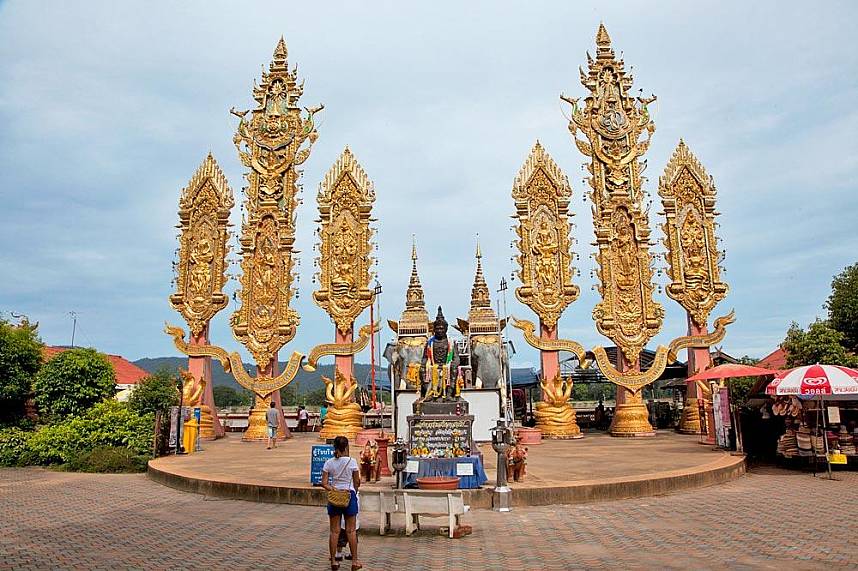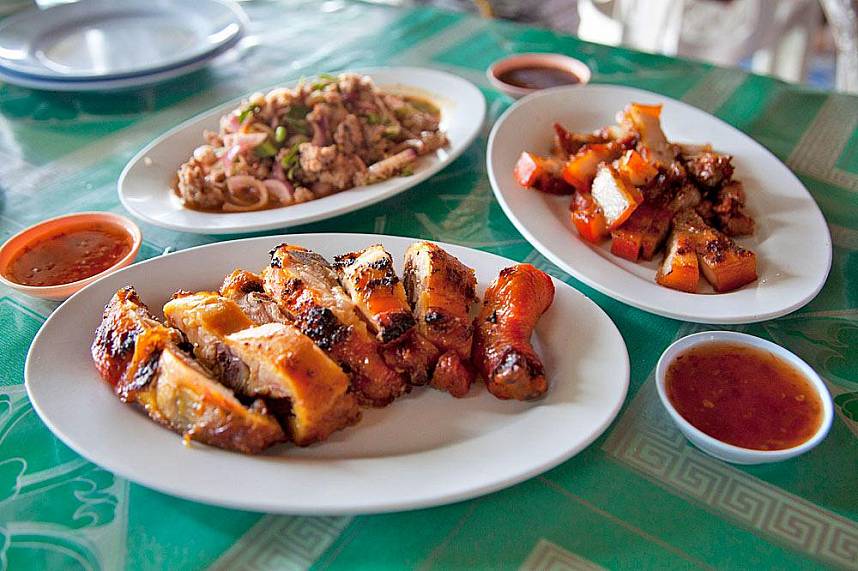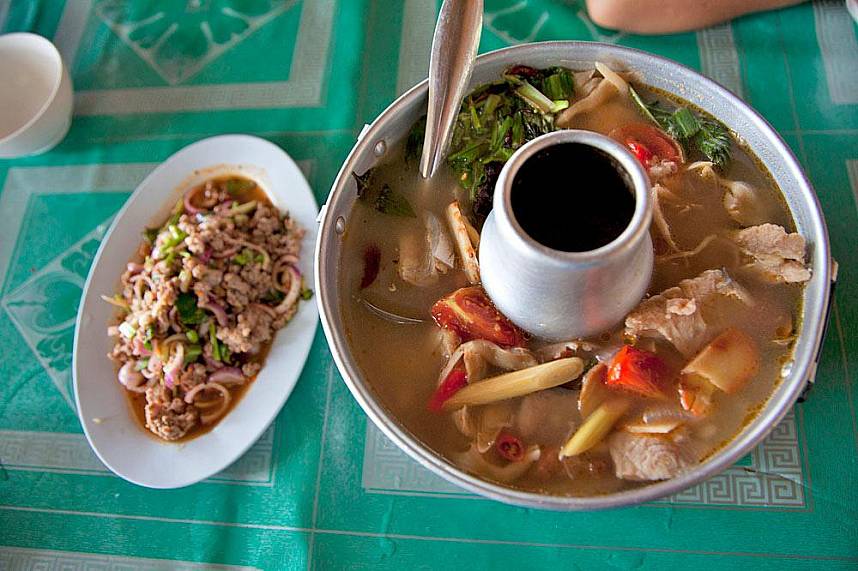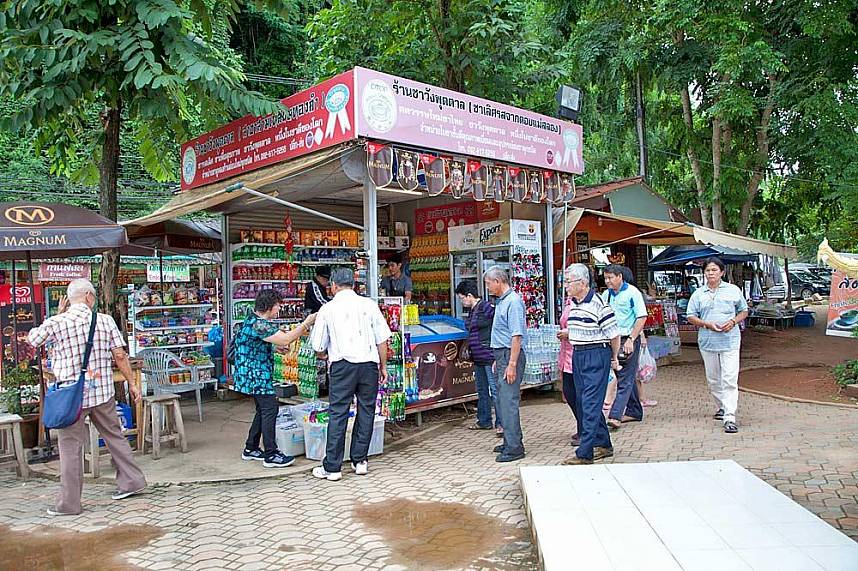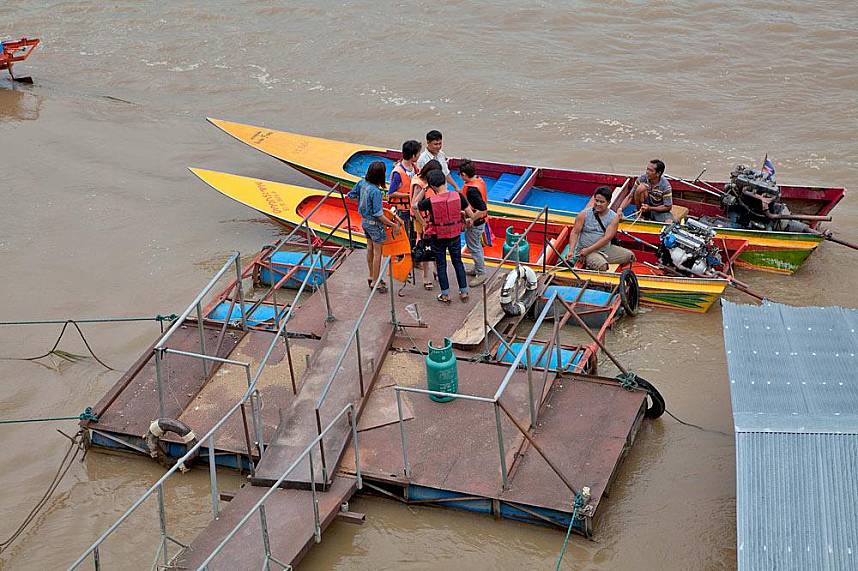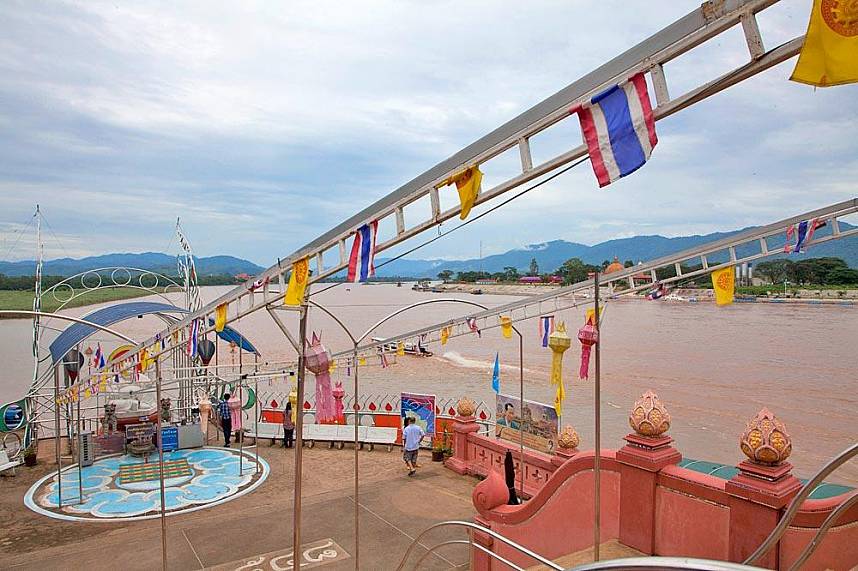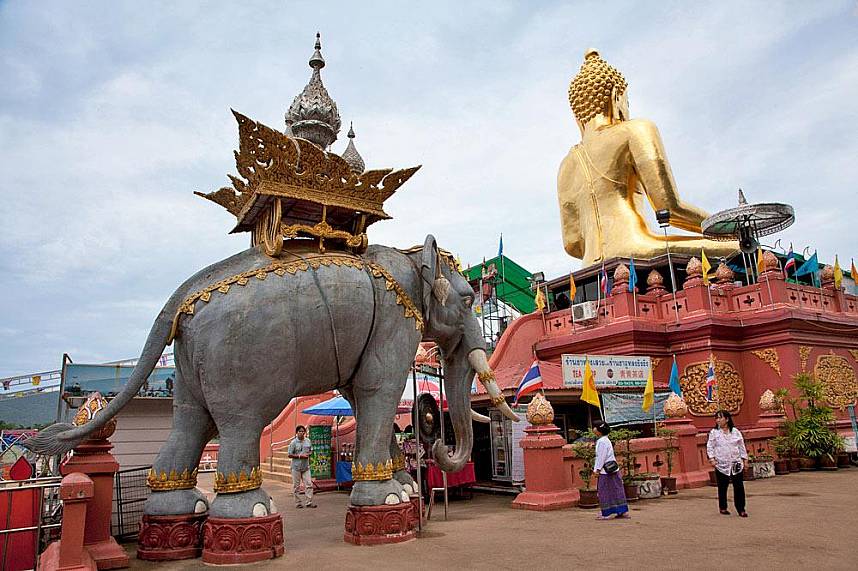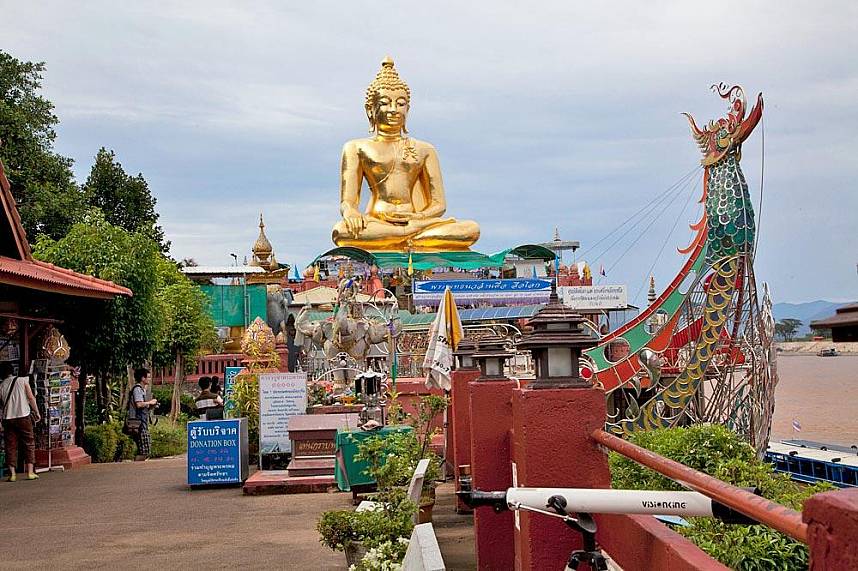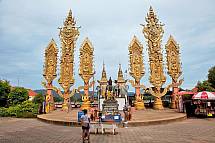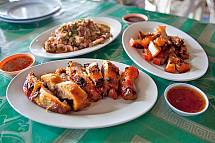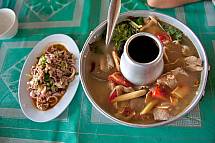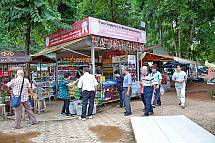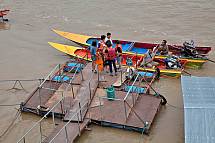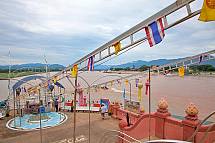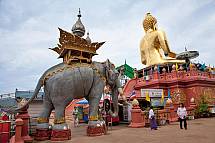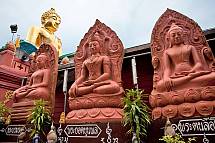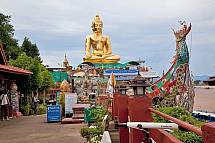Golden Triangle Chiang Rai
Golden Triangle Region of Thailand, Chiang Rai
Every guidebook seems to have a different view of the evolution of the term 'golden triangle' and even disagree on when the term was coined. Most do agree that the term applies to the opium growing region covering Northern Thailand, Eastern Burma and Western Laos.
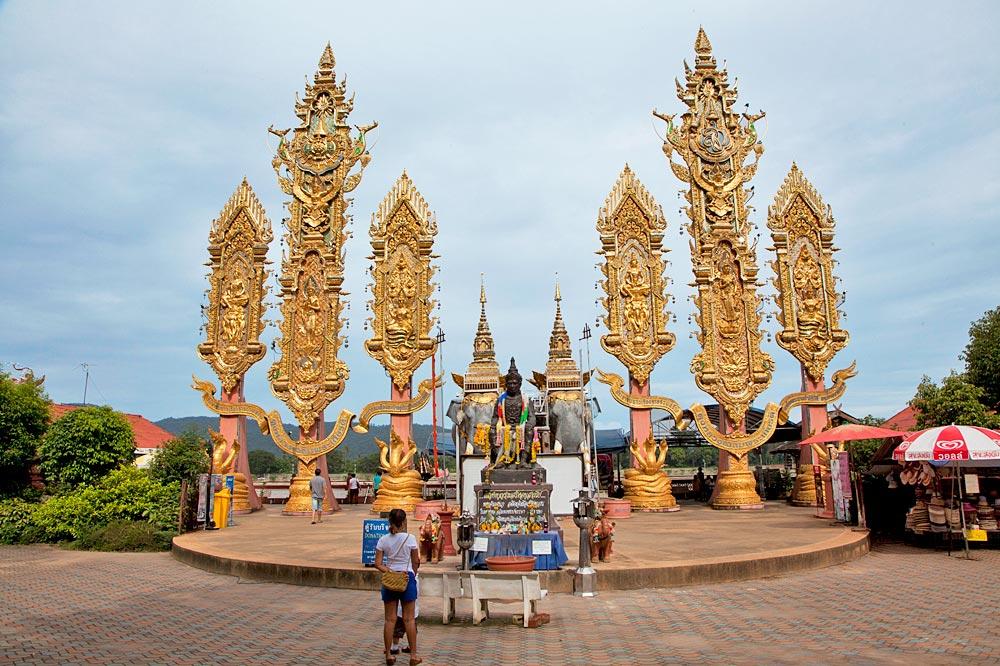
Opium production has been illegal in Thailand since 1959. Thanks to a highly successful crop substitution program undertaken by the Royal Projects Foundation established by His Majesty King Bhumipol, opium production has largely been eliminated in Thailand. However, across the border in Burma, the Shan United Army, which has been fighting the central Burmese government for an independent Shan state, has been accused of funding its war through the sale of opium and heroin.
Many tourists flock to the Golden Triangle region of Thailand expecting some sort of 'wild west' scene. They are certainly disappointed. The Thai area of the former triangle is full of small quiet villages where the most exciting thing that happens is the arrival of the next tour bus.
The area is full of beautiful natural scenery and ancient temples, so it's very much worth a visit. Just go with the proper expectations. In fact, the area is proving quite popular for those that want something different, away from the beach scene. To serve them, a number of hotels and resorts have been built in the area, some of them quite luxurious.
The typical sights on a Golden Triangle tour are the town of Mai Sai, where you can even cross into Burma for some shopping; the small village of Sop Ruak, where the Ruak and Mekong rivers meet, forming the borders of three countries; and finally the ancient city of Chiang Saen.
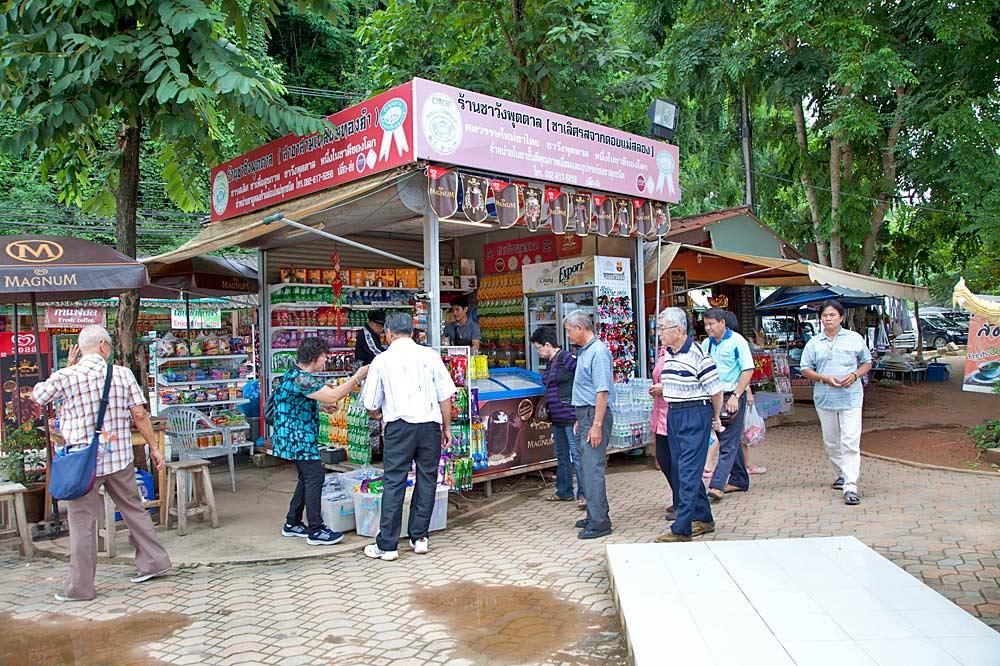
Golden Triangle Park’s ‘edu-taining’ Hall of Opium is a two-level museum that shows the history of opium throughout the ages, covering everything from production through to consumption and the effects of the drug.
Stepping out of Thailand, the Burmese border town of Tachileik, a major trading post,gives visitors a glimpse into the way of life of a mysterious nation. The journey begins with Wat Pradhat Doi Wao, also known as the Scorpion Temple, built by a king of Wiang Hirannakhon Ngoen Yang in the mid-8th century. Standing atop a hill, the temple offers views into both Thailand and Burma and a bridge that takes visitors to immigration and customs control for both countries. After officially entering the country, visitors can take a tuktuk to the Shwedagon Pagoda, a scale replica of the iconic golden pagoda in Burma’s capital, Yangon.
Many visitors to the Golden Triangle like to make merit at Wat Pra That Chom Kitti, where a sacred relic of the Buddha’s forehead is believed to be on display. Built in the 10th century, the temple is very popular with Thais from across the kingdom who can be seen offering food, drinks and flowers to the monks.
The Golden Triangle’s mountains are wonderful for hiking, offering everything from challenging uphill climbs to leisurely strolls. Trekkers can learn about the local hill tribe way of life by passing through Houi Mak Leim National Park’s stunning natural surroundings to visit local villages.
Visitors to the Golden Triangle can also see a giant golden Buddha, elephant statues, grand shrines to Thailand’s royal family, half-a-dozen photo opportunity road signs for the Golden Triangle, take river cruises, buy gifts at souvenir shops and take in the ambience from Western-style cafes.
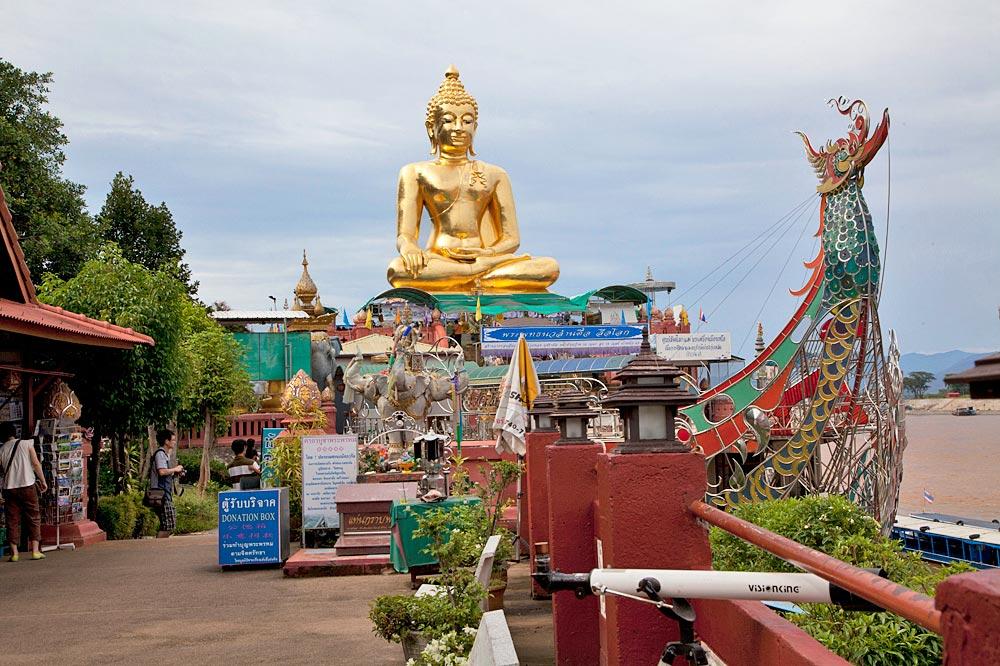
Click the link to view all Chiang Rai villas for rent.

